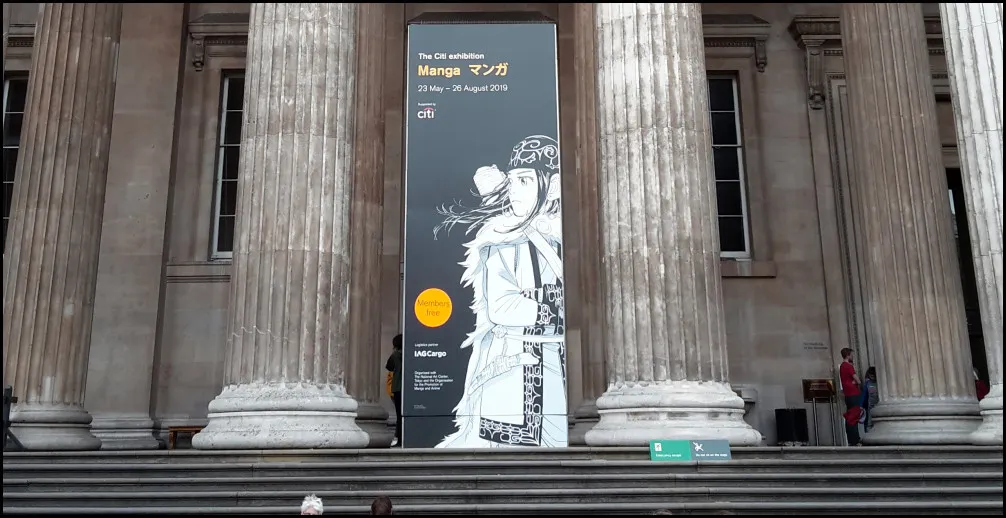 Manga at The British Museum. The girl on the poster is Asirpa from Noda Satoru's Golden Kamuy, about the Ainu culture of Hokkaido
Manga at The British Museum. The girl on the poster is Asirpa from Noda Satoru's Golden Kamuy, about the Ainu culture of HokkaidoThis is an exhibition I was looking forward to more than any other for a quite a while, and it did not disappoint! We were there for two hours on Monday evening and still missed a couple of (very small) bits.
The Manga exhibition is in the massive Salisbury Gallery at The British Museum
Manga?
Manga is the Japanese narrative art form which shares many similarities with Western comics. In Japan, narrative art dates back to the Edo period (17th - 19th Centuries - European Enlightenment through to the start of the Industrial Revolution), but the artwork generally considered to be the start of it all - 'Handscroll of Frolicking Animals' dates back to about 1200 AD (the height of the European religious wars of the Middle Ages).
In the 19th Century, various Europeans arrived in Japan and introduced western style newspapers and parody magazines. After World War II, America pushed its culture heavily into Japan. The Japanese traditional arts met Mickey Mouse in the mind of Tezuka Osamu, and modern manga was born.
We now also have anime - the moving picture version, and of course video games like Pokémon.
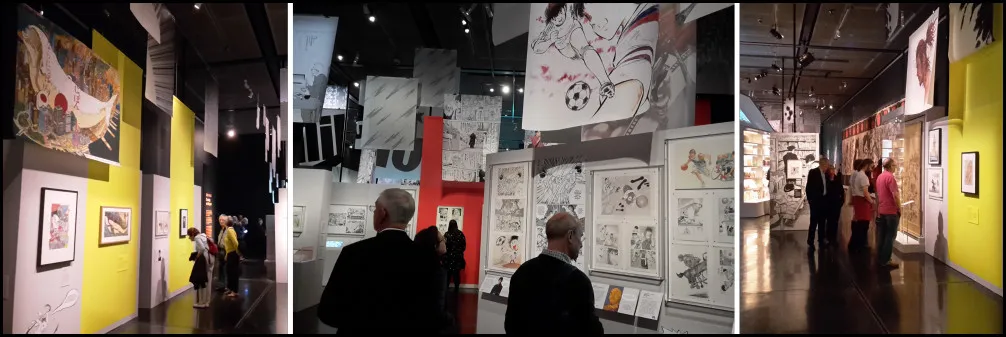
The key difference between manga and Western graphic novels is that manga is very much showing the story in pictures, while a graphic novel shows images relating to the story and relies heavily on dialogue and narration to explain what's going on.
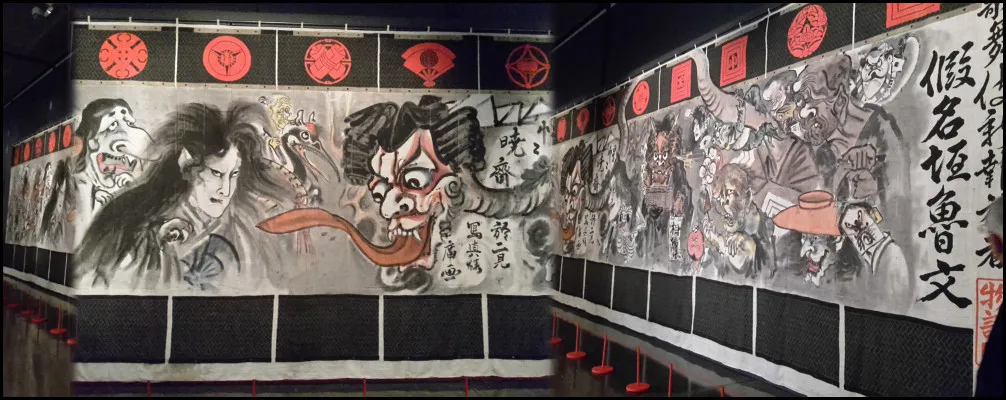 Shintomiza theatre Curtain by Kawanabe Kyosai back in 1880. He alledgedly painted this in 4 hours after downing a couple of bottles of sake. 17 metres long (4m high), it is an amazing piece of work
Shintomiza theatre Curtain by Kawanabe Kyosai back in 1880. He alledgedly painted this in 4 hours after downing a couple of bottles of sake. 17 metres long (4m high), it is an amazing piece of workMy personal introduction to manga came via anime on British TV - 'Battle for The Planets' and 'Robotech' were favourites. Then I saw 'Akira' one night at Glastonbury Festival and that was me done for. It didn't take long to track down the first volume of the manga, although there wasn't a second volume for many years - in the late 80s there was no market for it!
Enough history - show me the art!
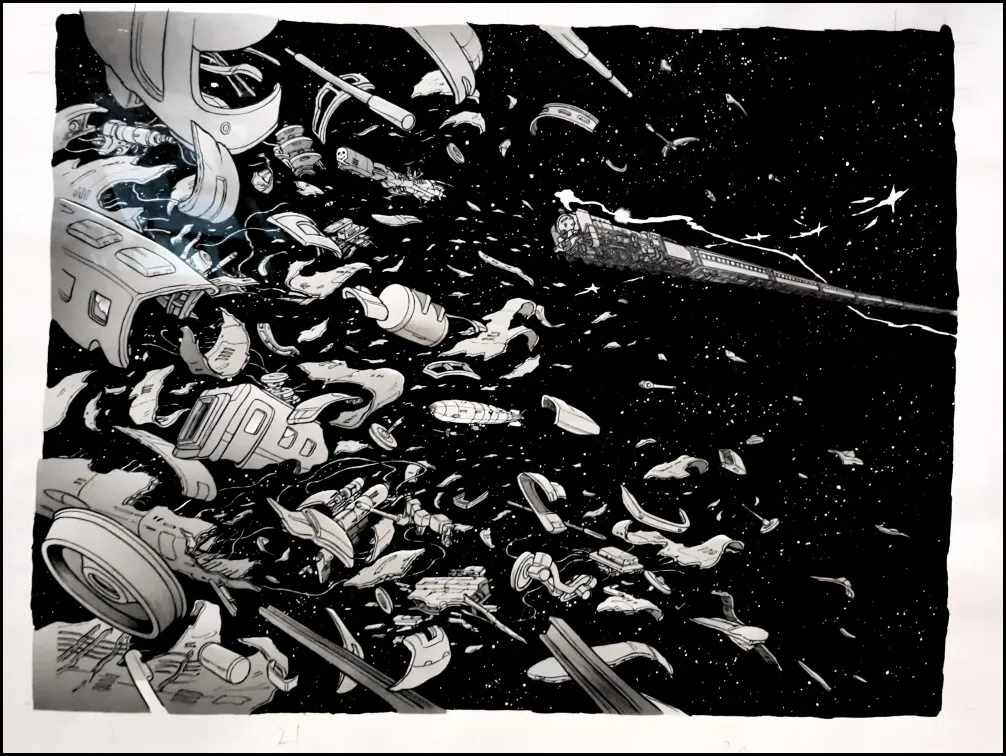 Galaxy Express 999 by Matsumoto Leiji. Because it has a steam train.
Galaxy Express 999 by Matsumoto Leiji. Because it has a steam train.In spaaaace!
The exhibition starts with an introduction to manga via the reinterpretation of Alice in Wonderland. This works well as it's a known fantasty story with well-defined imagery and you can therefore relate to the manga versions.
After that there's a section explaining how to read it (right to left, top to bottom) and what the various icons and visual effects mean. Amusingly, the example of a multi-page manga supposed to show how it all fits together has been put together out of sequence and is chaotic. All these poor people who thought they understood what they'd just been shown were suddenly back to square one.
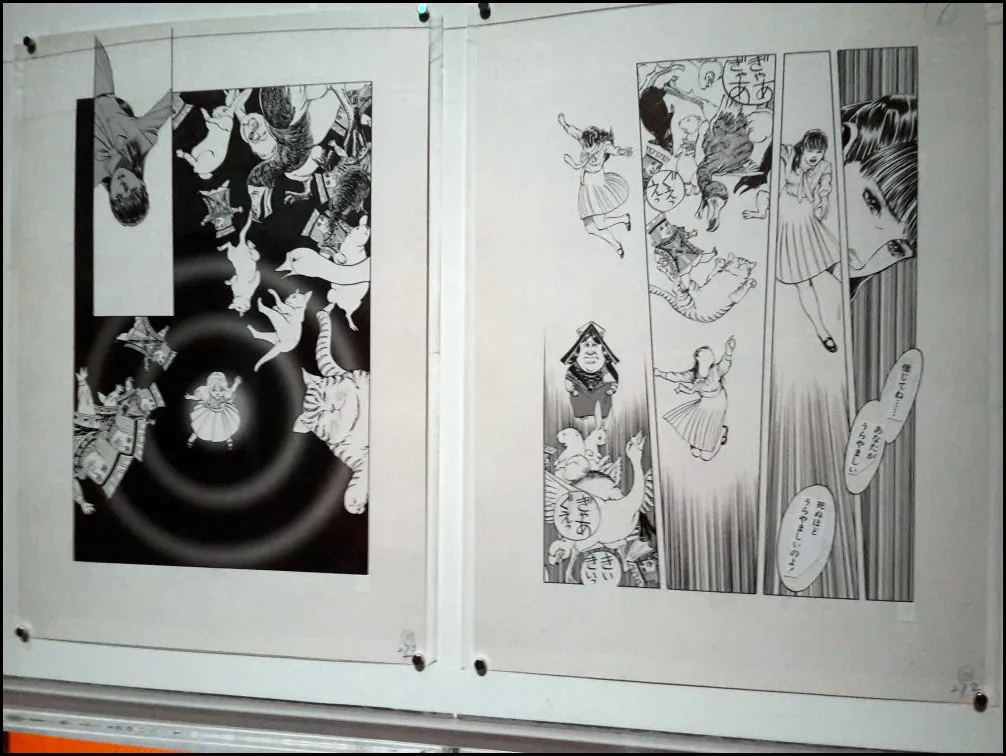 Alice as interpreted by Hoshino Yukinobu. They feature several takes on Lewis Carroll's character, including one by Otomo Katsuhiro, of Akira fame
Alice as interpreted by Hoshino Yukinobu. They feature several takes on Lewis Carroll's character, including one by Otomo Katsuhiro, of Akira fameThere was then a section on history, featuring Tezuka Osamu's 'Astro Boy' and various of his other creations. He is the man behind 'Kimba The White Lion', the story of an orphaned lion cub who grows to be king of the jungle. Which just shows that the Disney/manga influence went in both directions. Tezuka is also credited with introducing TV anime when he animated 'Astro Boy'. He was a one-man industry in the 50s and there isn't a manga artist since that doesn't cite him as an influence.
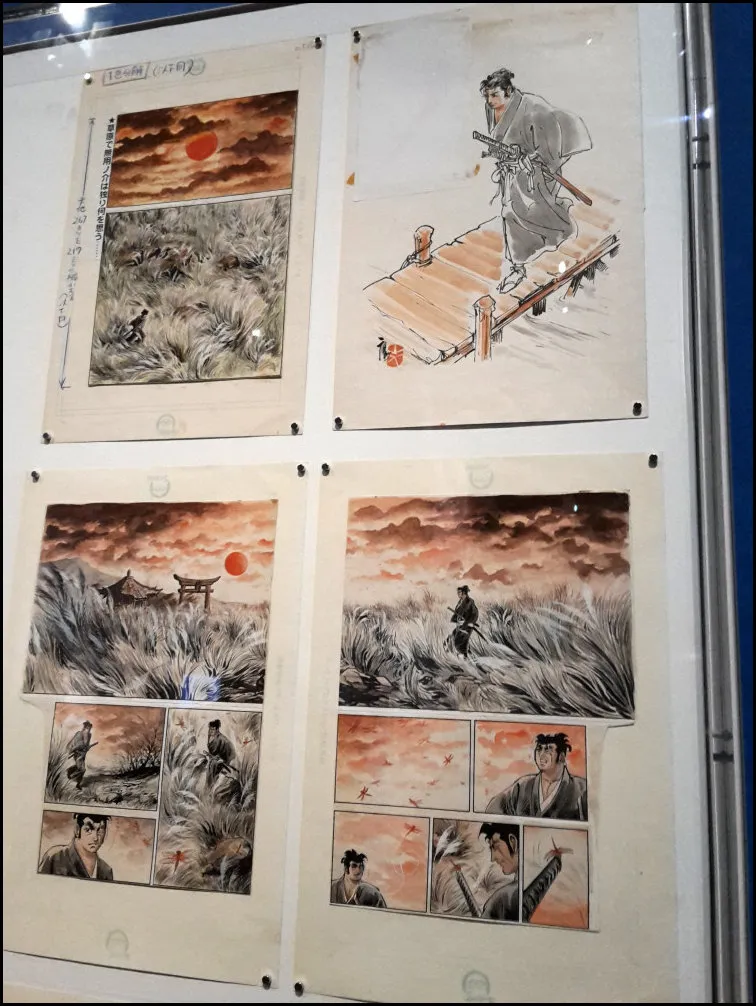 Bounty Hunter by Saito Tokao
Bounty Hunter by Saito TokaoThe exhibition looks at the various genres and sub-genres of manga, sometimes showing entire short stories. Hagio Moto's 'The Willow Tree' was one - a beautiful piece of work running for 20 pages, only three of which have dialogue. There's sport manga, porn manga, journalistic manga, relationship manga covering every permutation and level of intensity you can think of, horror manga, time-slip manga... and so on.
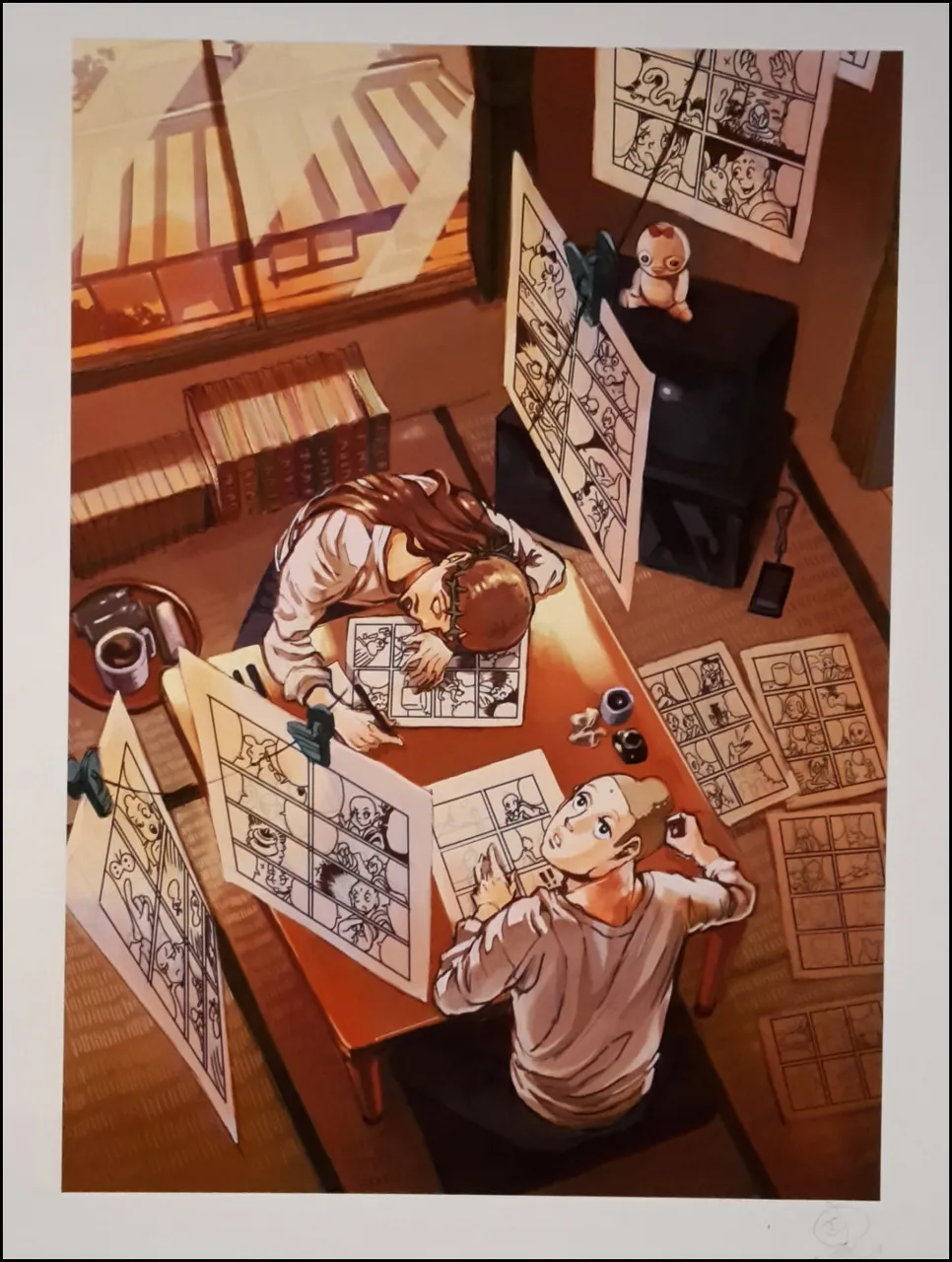 Saint Young Men by Nakamura Hikaru. Jesus and Buddha share a flat in a Tokyo suburb. This is an incredibly funny manga, one story has Jesus discovering that Father Christmas means more to the Japanese than he does. This cover art is for a story where Buddha starts drawing manga
Saint Young Men by Nakamura Hikaru. Jesus and Buddha share a flat in a Tokyo suburb. This is an incredibly funny manga, one story has Jesus discovering that Father Christmas means more to the Japanese than he does. This cover art is for a story where Buddha starts drawing mangaThey covered a lot of well-known modern manga, like 'Dragonball', 'One Piece', etc. but no 'Akira' or 'Ghost In The Shell' nor much from the 80s, which I thought was odd.
There was a shrine to Studio Ghibli, where brief clips from all the films were balanced with short documentary segments that gave insight into the creative processes.
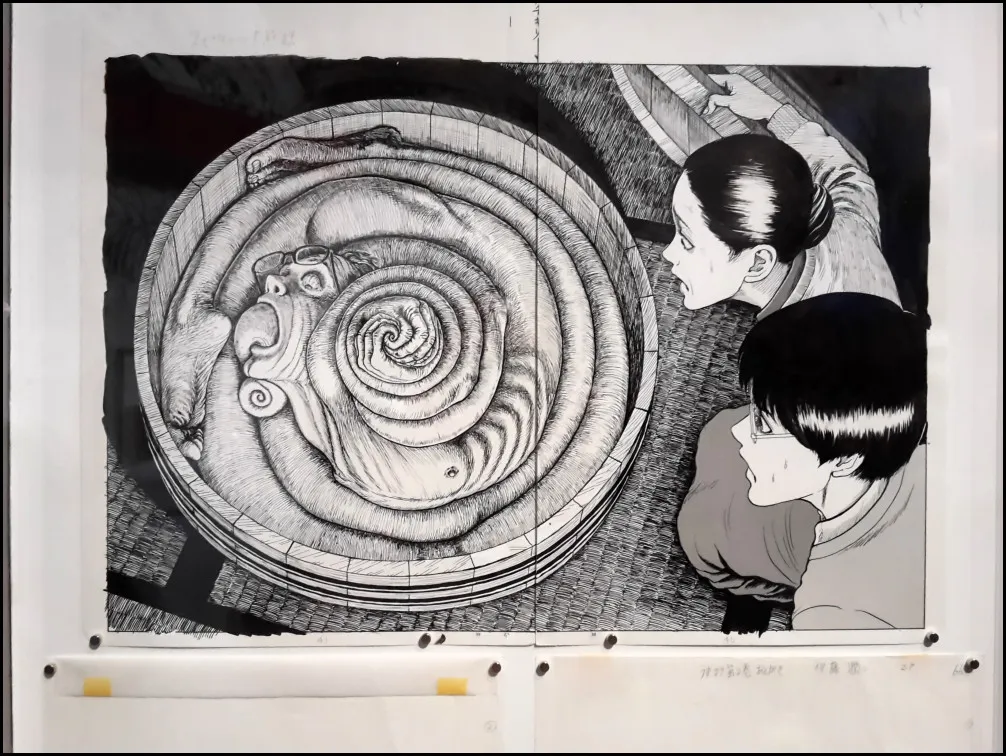 Uzumaki (Spirals) by Nakaguma Ichiro, is the most disturbing comic I've ever read. Like a good Stephen King novel, it uses normal everyday life to scare the pants off you
Uzumaki (Spirals) by Nakaguma Ichiro, is the most disturbing comic I've ever read. Like a good Stephen King novel, it uses normal everyday life to scare the pants off youThe use of original art (genga) was fascinating - you could see where bits had been cut out and moved, or Tippexed out. Sometimes there wasn't even text in the speech bubbles.
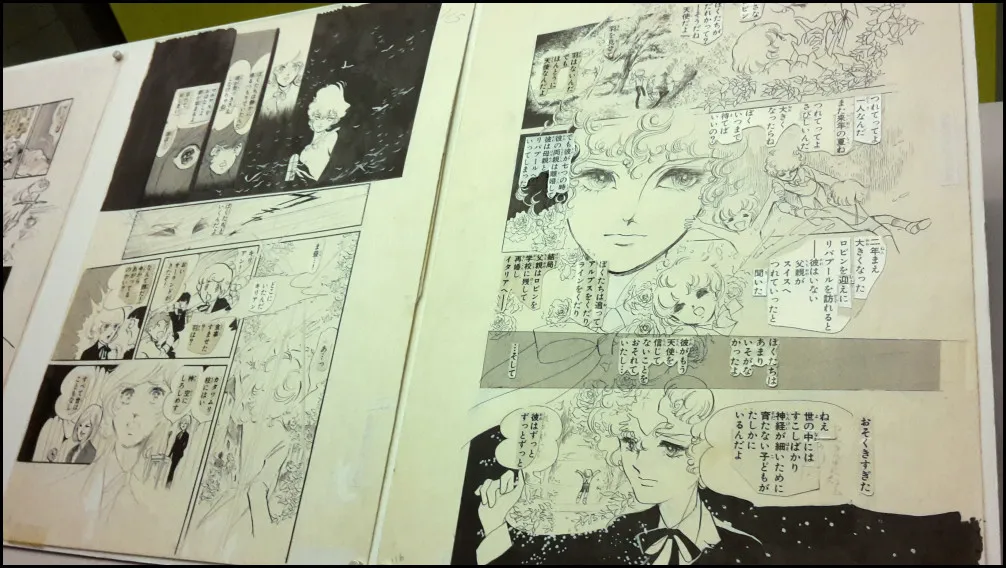 An excellent example of genga (original art), complete with cutouts and Tippex. Unfortunately, I forgot to take a shot of the caption for this but it's by a female artist
An excellent example of genga (original art), complete with cutouts and Tippex. Unfortunately, I forgot to take a shot of the caption for this but it's by a female artistThere was even a bookshop where you could flick through Japanese editions of various manga and go online to read translations direct from the publishers.
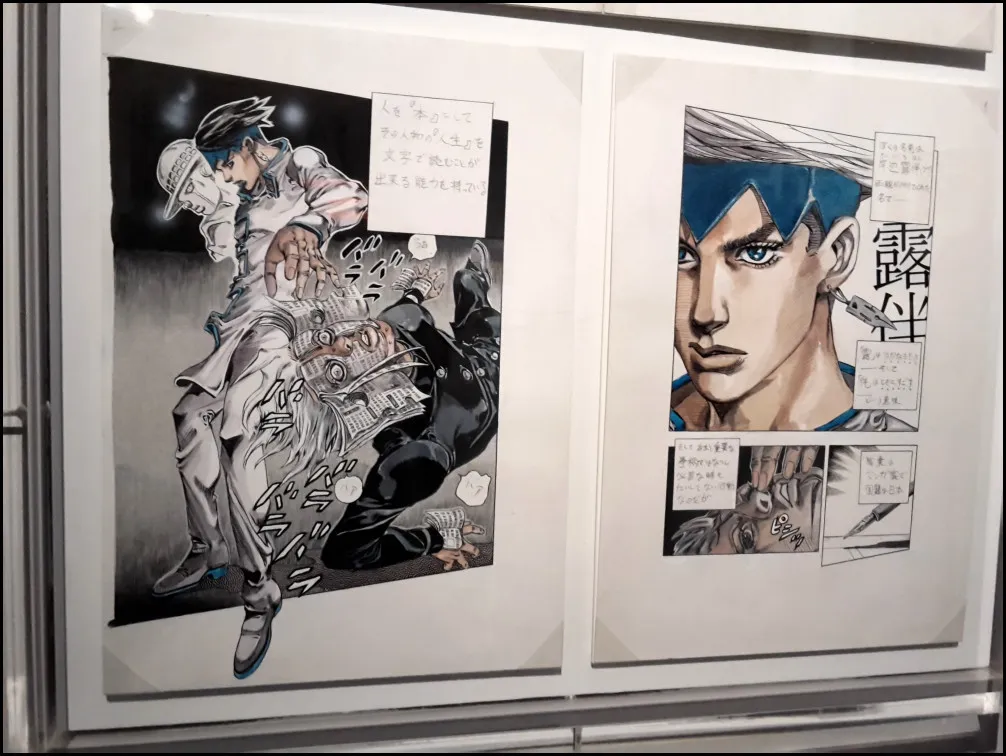 Rohan at The Louvre by Araki Hirohiko made me think of European comic artists like Bilal. Indeed there was a manga that was written with Moebius on display (but I can't remember which it was). I love the facebook in this!
Rohan at The Louvre by Araki Hirohiko made me think of European comic artists like Bilal. Indeed there was a manga that was written with Moebius on display (but I can't remember which it was). I love the facebook in this!The pictures I took only scratch the surface, and the exhibition is merely an overview of the topic. The exhibition catalogue - the size of phone book - goes into greater detail and has more material and is beyond argument the best exhibition catalogue I've ever bought.
In short, come down to London over the next three months and visit the British Museum. If you can't make it then order yourself the catalogue and set aside a wet weekend to travel around the world in black-and-white.
Two more...
Blue Giant Supreme
Music manga. Layout sketches, genga and finally the English-language version.
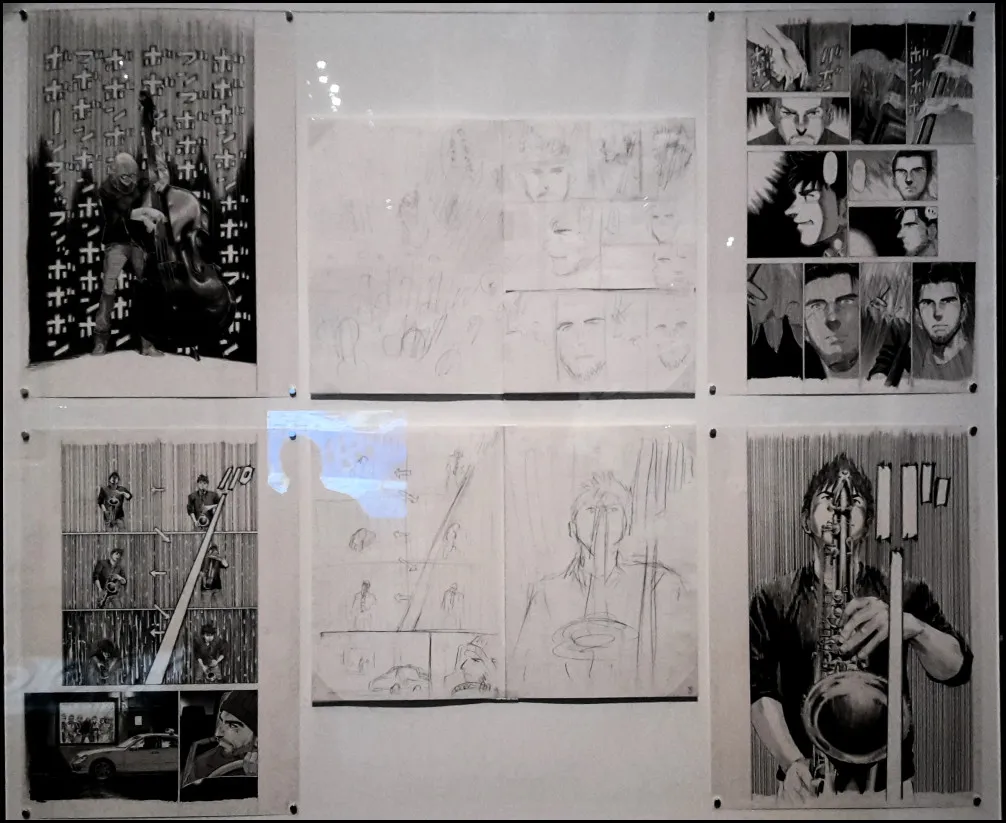
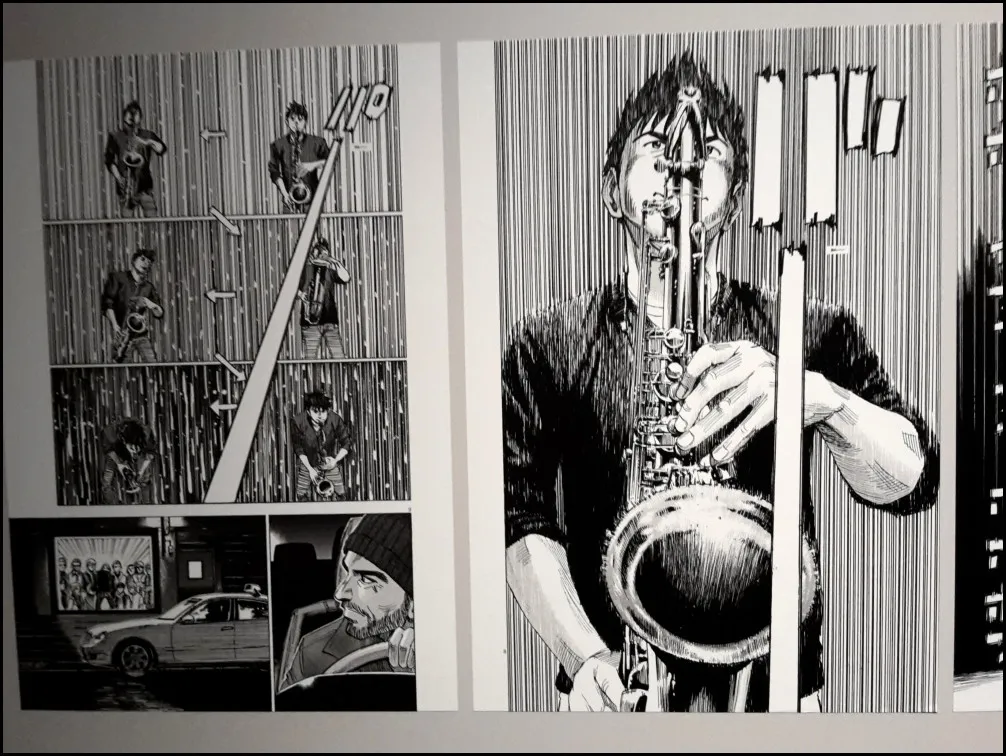 Blue Giant Supreme by Ichizuka Shin'ichi. You can't read them, but the little horizontal boxes are translations. The music itself comes out of the artwork interacting with the sound effects
Blue Giant Supreme by Ichizuka Shin'ichi. You can't read them, but the little horizontal boxes are translations. The music itself comes out of the artwork interacting with the sound effectsThe End of Eel-dog
Gag manga. This does not need translating. Remember the pages go from right to left, as do the panels.
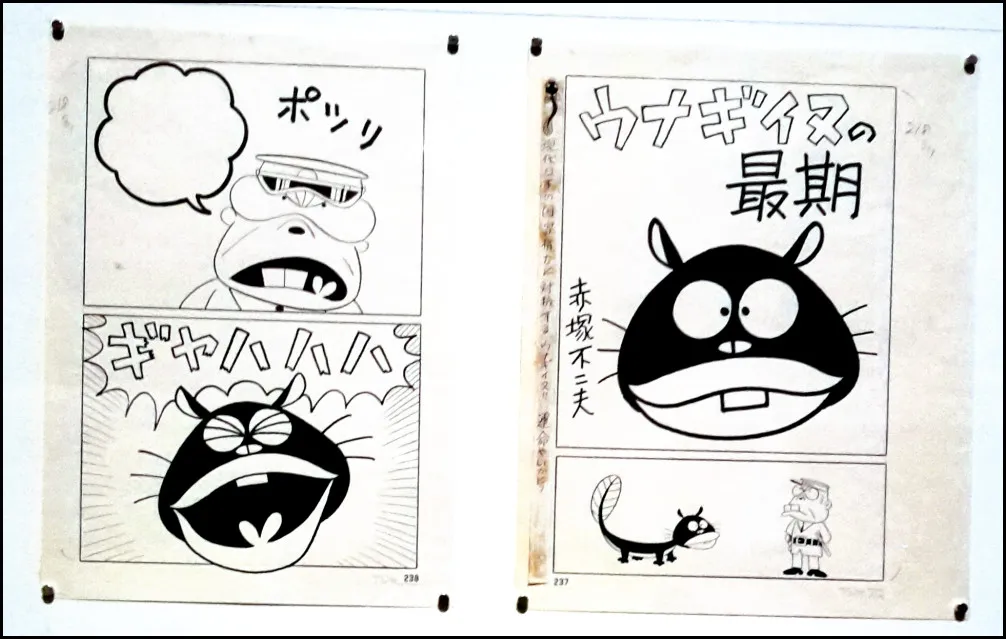
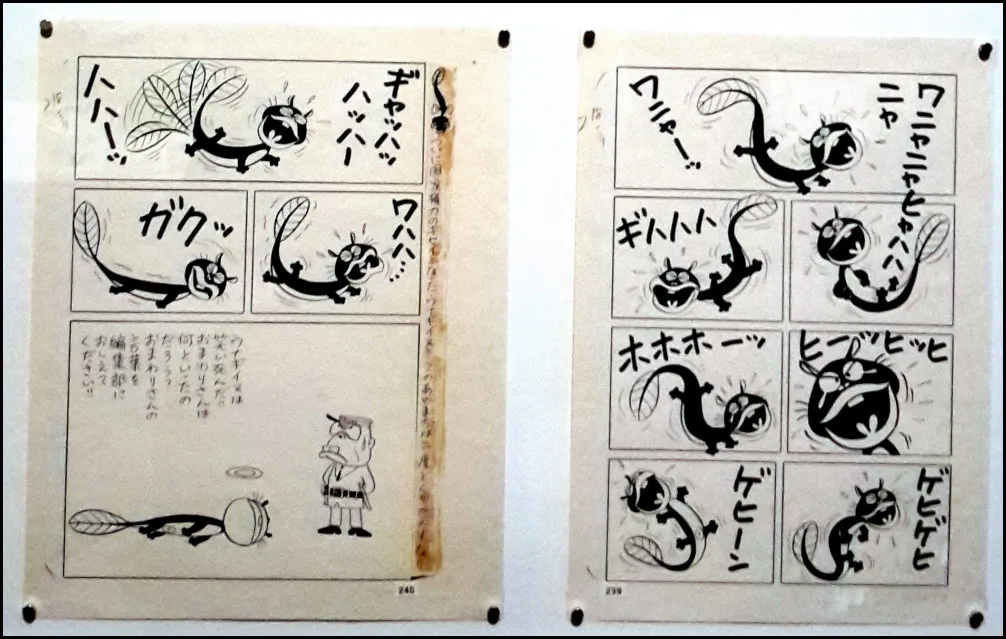 The End of Eel-dog by Akatsuka Fujio
The End of Eel-dog by Akatsuka FujioThe last page is worth giving the translation for...
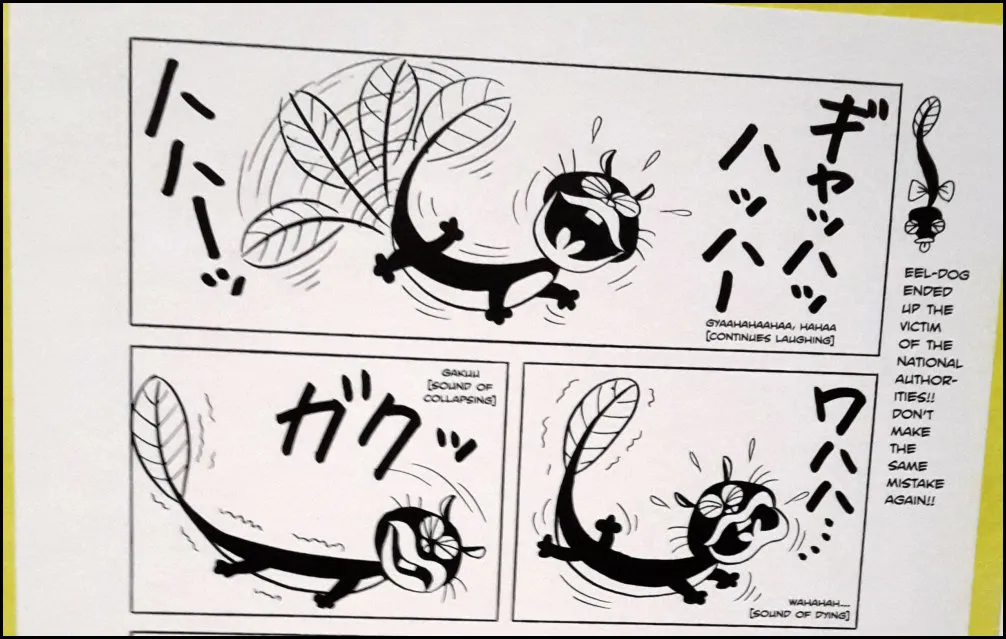
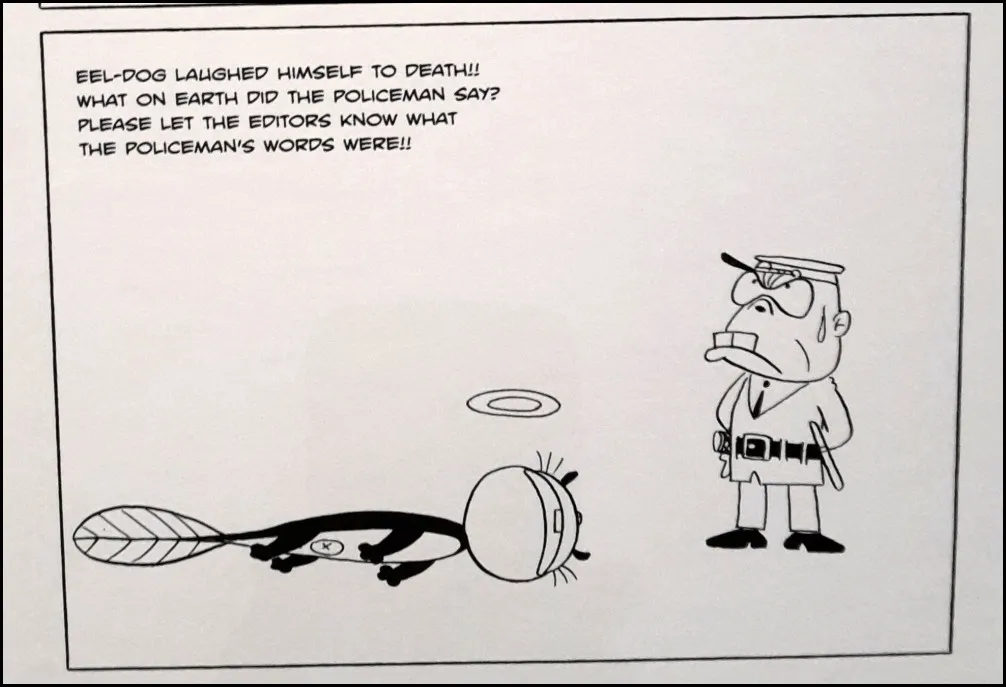 The End of Eel-dog by Akatsuka Fujio
The End of Eel-dog by Akatsuka FujioPromotional video
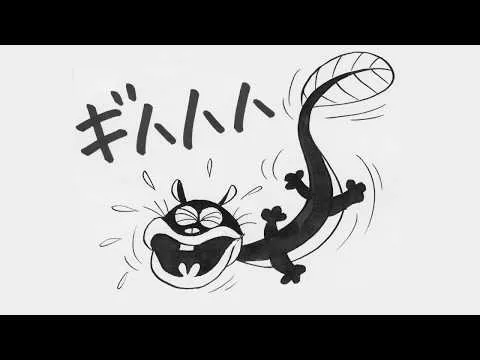
It's embedded in this page, which also links to a couple of excellent introductory articles.
All artwork is copyright the artists. All the photos were taken by me, of material marked okay to photograph.
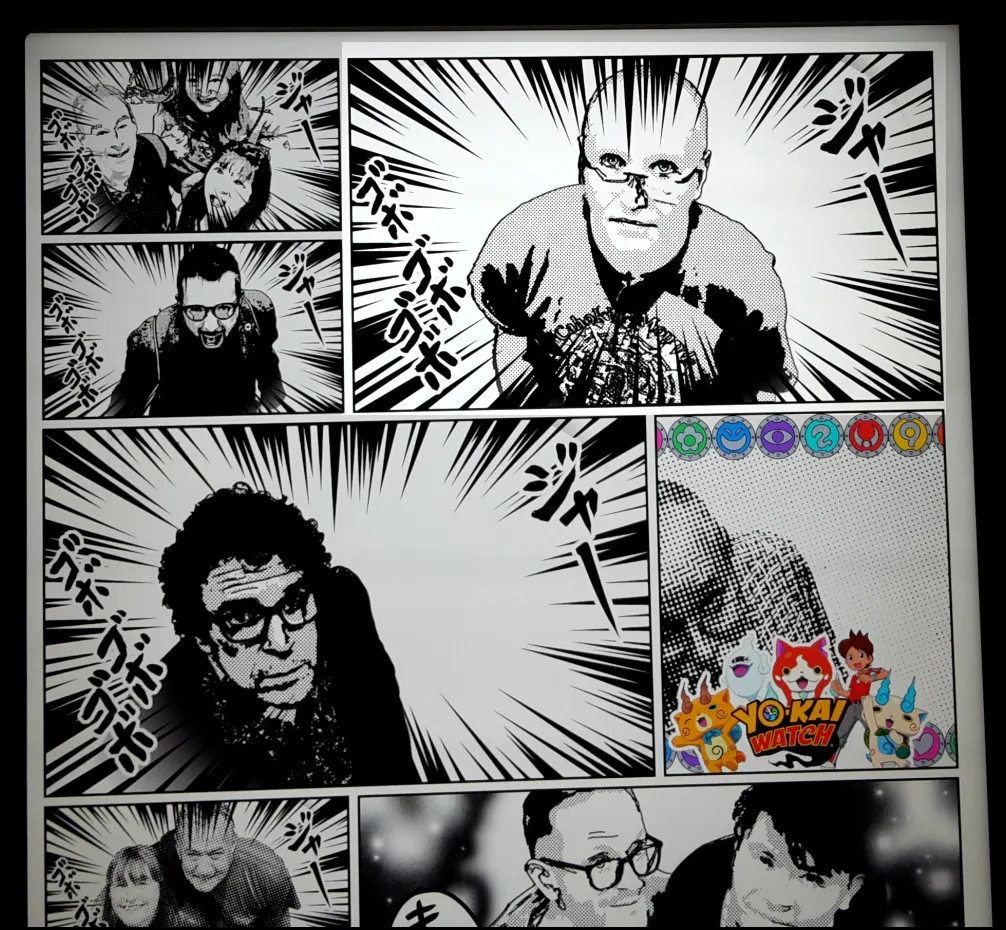 Me as manga!
Me as manga!